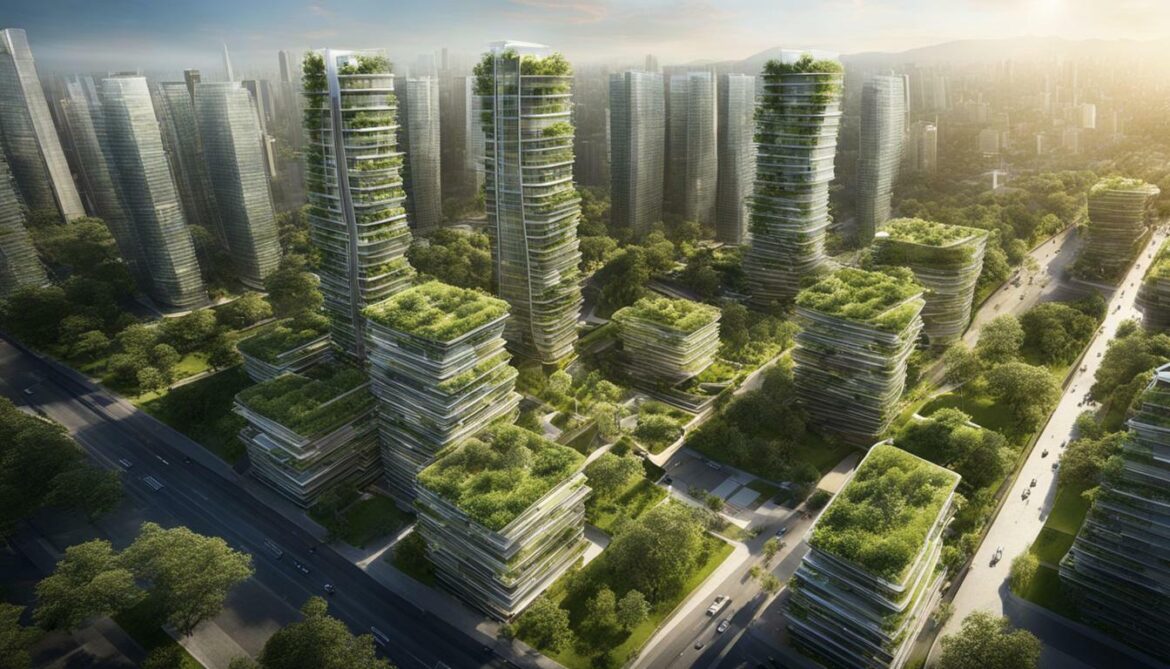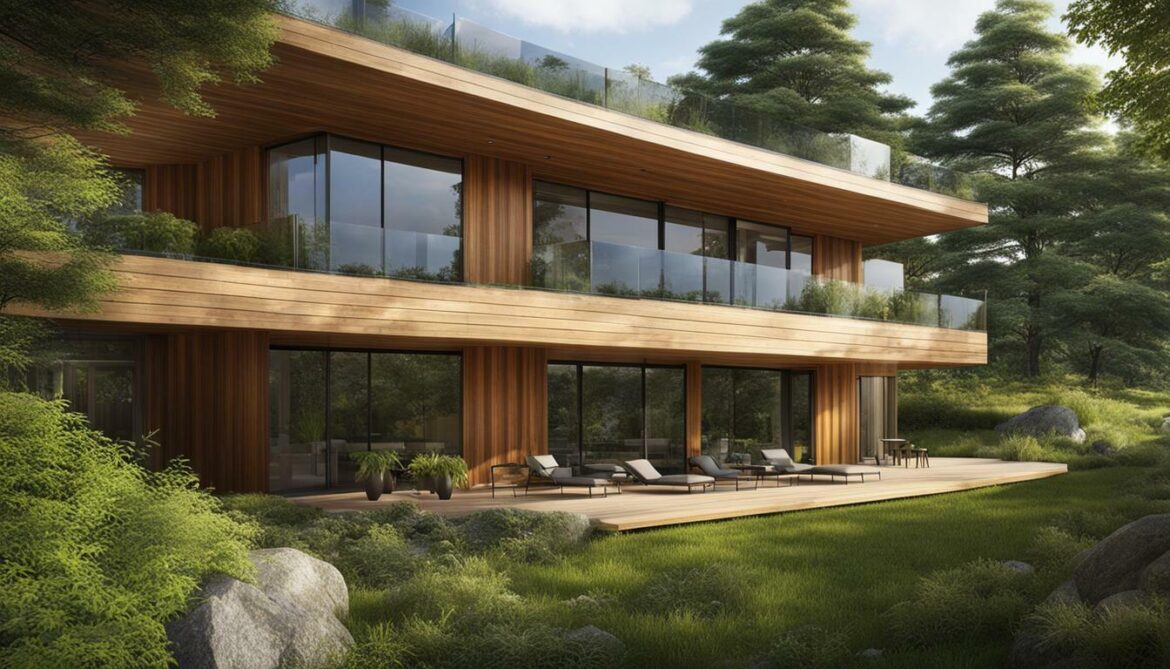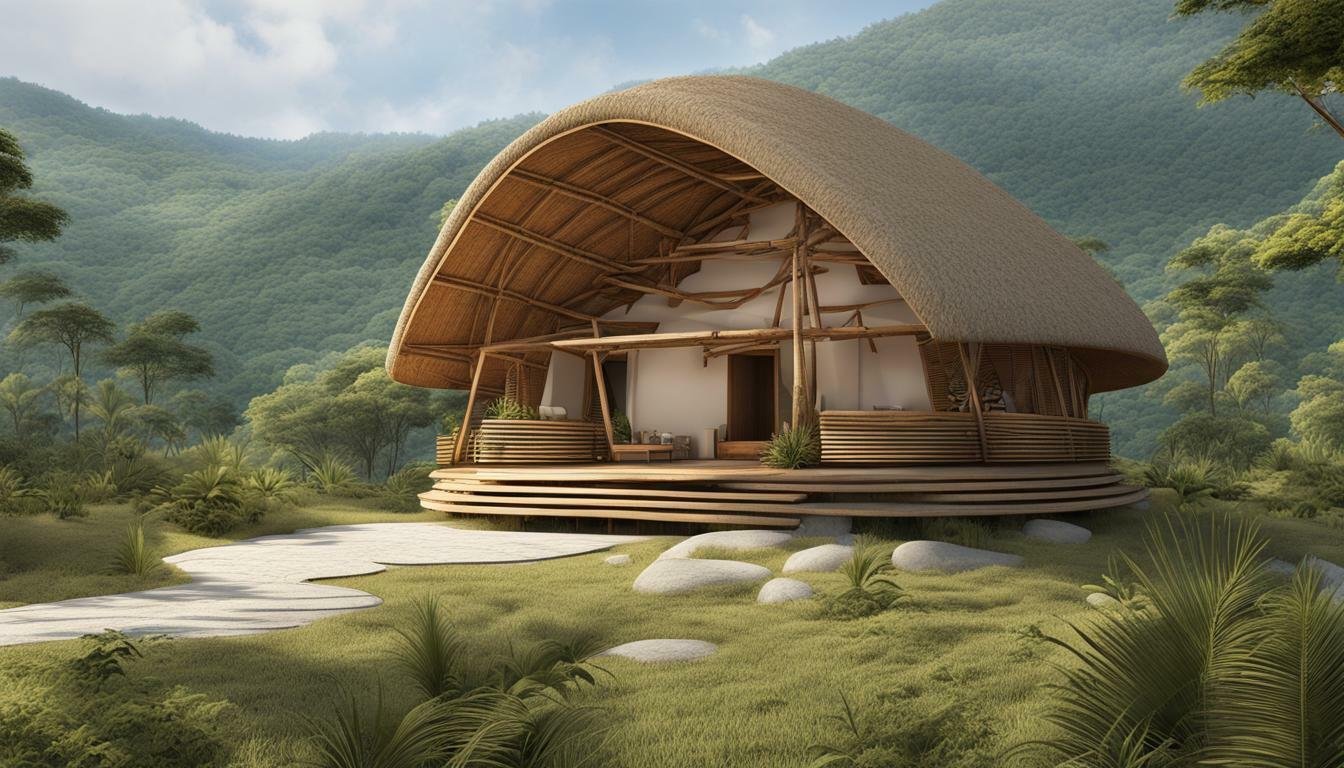Liechtenstein Top Green Buildings
Liechtenstein is home to some of the most impressive sustainable architecture in Europe, featuring top green buildings that showcase innovative and eco-friendly construction techniques. One notable example is the Active Energy Building in Vaduz, designed by falkeis.architects. This remarkable structure focuses on creating a sustainable environment by producing more energy than it consumes. It harnesses renewable energy sources such as geothermal energy and solar power, and incorporates cutting-edge technologies for regulating the building climate. The Active Energy Building is also adaptable, allowing for spatial reprogramming without affecting load-bearing components. With its movable building envelopes and 3D Voronoi load-bearing structures, this pioneering project has garnered international attention as an exemplar of energy-efficient architecture.
- Liechtenstein is renowned for its sustainable architecture and top green buildings.
- The Active Energy Building in Vaduz is a standout example of eco-friendly construction practices.
- This building focuses on energy efficiency and utilizes renewable energy sources such as geothermal and solar power.
- It showcases innovative technologies like movable building envelopes and 3D Voronoi load-bearing structures.
- The Active Energy Building is adaptable and allows for spatial reprogramming without compromising structural integrity.
The Active Energy Building in Vaduz
One of the standout green buildings in Liechtenstein is the Active Energy Building located in Vaduz, renowned for its emphasis on renewable energy systems and energy-efficient architecture. Designed by falkeis.architects, this remarkable structure goes beyond traditional sustainability practices by producing more energy than it consumes.
The Active Energy Building harnesses the power of renewable energy sources such as geothermal energy and solar power. Through innovative design and advanced technologies, it maximizes energy efficiency while reducing its environmental impact. The building’s cutting-edge techniques for regulating the internal climate ensure optimal user comfort while minimizing energy consumption.
The flexibility of the Active Energy Building is another remarkable aspect. It allows for spatial reprogramming without affecting load-bearing components, ensuring adaptability for various purposes and future needs. This adaptability is achieved through the use of movable building envelopes and 3D Voronoi load-bearing structures, showcasing the building’s commitment to innovative design and construction practices.
The Active Energy Building in Vaduz is a pioneering project that has garnered international acclaim for its energy-efficient architecture and sustainable approach. It serves as a shining example of how buildings can be designed to not just minimize environmental impact but also contribute positively to the energy grid.
With its state-of-the-art technologies and forward-thinking design, the Active Energy Building stands as a testament to Liechtenstein’s commitment to sustainable development and green building practices. This exceptional structure sets a new standard for eco-friendly architecture and serves as an inspiration for future projects in Liechtenstein and beyond.

| Key Features | Benefits |
|---|---|
| Renewable Energy Sources | Reduces reliance on fossil fuels and reduces carbon emissions |
| Advanced Climate Control Systems | Ensures optimal user comfort while minimizing energy consumption |
| Flexible Design | Allows for spatial reprogramming and future adaptability |
| Innovative Technologies | Movable building envelopes and 3D Voronoi load-bearing structures |
Sustainable Design and Innovative Technologies
Liechtenstein’s top green buildings incorporate sustainable design principles and make use of innovative technologies such as movable building envelopes and 3D Voronoi load-bearing structures. These buildings prioritize the use of green building materials and embrace sustainable building practices to create environmentally conscious structures that are both visually appealing and functional.
Movable building envelopes are a key feature in the design of these green buildings. They allow for flexibility in the use of space and enable adjustments to the building’s exterior based on weather conditions, enhancing energy efficiency and reducing the overall environmental impact. By adapting to the changing needs of the occupants and the surrounding environment, these buildings can optimize their energy consumption and contribute to a more sustainable future.
Another innovative technology utilized in Liechtenstein’s green buildings is the incorporation of 3D Voronoi load-bearing structures. Inspired by the natural cellular structure of biological organisms, these structures provide strength and stability while minimizing material usage. By strategically arranging load-bearing elements, architects can create lightweight yet durable constructions that reduce the environmental footprint without compromising on structural integrity.
Benefits of green building materials
In addition to the implementation of innovative technologies, Liechtenstein’s top green buildings prioritize the use of green building materials. These materials are sourced sustainably, often from recycled or renewable sources, and minimize harmful environmental impacts. Green building materials contribute to improved indoor air quality, energy conservation, and reduced carbon emissions. They also offer long-term cost savings and promote the overall health and well-being of building occupants.

| Benefits of Green Building Materials | |
|---|---|
| Improved Indoor Air Quality | Green building materials are low in volatile organic compounds (VOCs), reducing the release of harmful pollutants and creating healthier indoor environments. |
| Energy Conservation | Materials with excellent insulation properties, such as recycled cellulose or straw bale, contribute to reduced energy consumption for heating and cooling. |
| Reduced Carbon Emissions | Using materials with low embodied carbon, such as bamboo or recycled metals, helps minimize the overall carbon footprint of the building. |
| Cost Savings | Green building materials have longer lifespans and require less maintenance, resulting in reduced operational costs over time. |
| Health and Well-being | Natural and non-toxic materials contribute to a healthier indoor environment, promoting the well-being of building occupants. |
By embracing sustainable design principles and incorporating innovative technologies, Liechtenstein’s top green buildings serve as a testament to the country’s commitment to environmental sustainability and the advancement of eco-friendly construction practices. These buildings not only showcase cutting-edge architectural design but also inspire others to adopt similar practices and contribute to a greener future for all.
Energy Efficiency and Environmental Sustainability
Liechtenstein’s top green buildings prioritize energy efficiency and strive for environmental sustainability through energy-efficient designs, LEED certifications, and a commitment to energy conservation. One outstanding example is the Active Energy Building in Vaduz, designed by falkeis.architects. This remarkable structure showcases cutting-edge sustainable practices and has gained international recognition for its innovative approach.
The Active Energy Building incorporates renewable energy sources, such as geothermal energy and solar power, to generate more energy than it consumes. By harnessing these sustainable resources, the building significantly reduces its carbon footprint. Additionally, the architects have implemented advanced techniques for regulating the building climate, ensuring optimal energy efficiency throughout the year.
This pioneering project also features notable advancements in construction technology. The building’s adaptable design allows for spatial reprogramming without affecting its load-bearing components, promoting a more flexible and sustainable use of space. It incorporates innovative technologies like movable building envelopes and 3D Voronoi load-bearing structures, making it a true exemplar of energy-efficient architecture.
Furthermore, Liechtenstein’s green buildings actively pursue LEED certification, a globally recognized benchmark for sustainable building practices. This certification acknowledges their commitment to environmental sustainability by promoting the use of eco-friendly materials, optimizing energy and water use, and prioritizing indoor air quality. Through these efforts, Liechtenstein’s top green buildings contribute significantly to the global drive for a more sustainable future.

| Benefits of Energy-Efficient Designs: | |
|---|---|
| 1. Reduced energy consumption and lower utility costs | |
| 2. Minimized environmental impact and reduced carbon emissions | |
| 3. Improved indoor comfort and air quality | |
| 4. Enhanced durability and longevity of the building | |
| 5. Potential eligibility for government incentives and rebates |
As more countries and organizations recognize the importance of sustainability, Liechtenstein’s top green buildings serve as inspiring examples of how energy-efficient designs and a commitment to environmental sustainability can be integrated into architectural practices. By prioritizing energy efficiency, obtaining LEED certifications, and embracing innovative technologies, these buildings contribute to a greener and more sustainable future for all.
Conclusion
Liechtenstein’s top green buildings are testament to the country’s commitment to sustainable architecture, eco-friendly construction, and environmental sustainability, setting a remarkable example for the rest of Europe and the world. These buildings showcase innovative design and construction practices that prioritize energy efficiency and utilize renewable energy sources.
An outstanding example is the Active Energy Building in Vaduz. Designed by falkeis.architects, this building goes beyond traditional sustainability measures. It not only strives to be energy-efficient but also aims to produce more energy than it consumes. It achieves this by harnessing renewable energy sources such as geothermal energy and solar power.
The Active Energy Building also incorporates cutting-edge techniques to regulate the building climate, making it adaptable and flexible for spatial reprogramming without compromising its structural integrity. Innovative technologies such as movable building envelopes and 3D Voronoi load-bearing structures further enhance its sustainability.
As a pioneering project, the Active Energy Building has attracted international attention for its emphasis on energy-efficient architecture and commitment to environmental sustainability. It serves as a shining example of how green buildings can positively impact the environment and inspire sustainable practices worldwide.
FAQ
What is the Active Energy Building in Vaduz?
The Active Energy Building in Vaduz is one of Liechtenstein’s top green buildings. It is a sustainable structure designed by falkeis.architects that focuses on producing more energy than it consumes.
What renewable energy sources does the Active Energy Building utilize?
The Active Energy Building utilizes renewable energy sources such as geothermal energy and solar power to power its operations.
What innovative technologies are used in the Active Energy Building?
The Active Energy Building features innovative technologies such as movable building envelopes and 3D Voronoi load-bearing structures, which contribute to its energy-efficient design.
Can the Active Energy Building be adapted for different purposes?
Yes, the Active Energy Building is adaptable and allows for spatial reprogramming without impacting its load-bearing components.
Why is the Active Energy Building significant?
The Active Energy Building is a pioneering project that showcases energy-efficient architecture and has attracted international attention. It serves as an example of sustainable construction and design practices.








